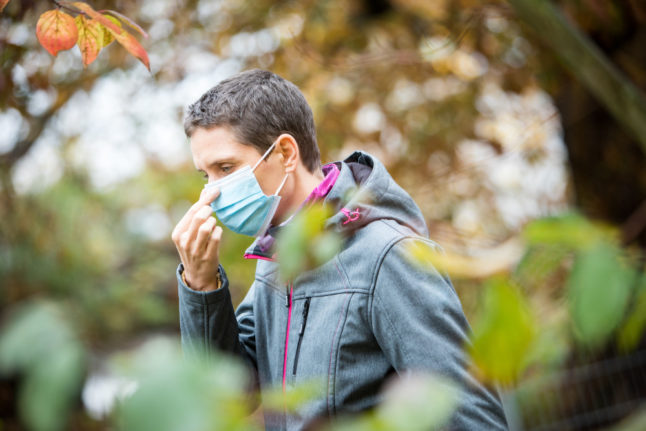The eastern German state of Saxony has recorded unprecedented Covid-19 infection rates among young people this week, with school-age pupils and teenagers among the worst affected.
In figures released by the Robert Koch Institute (RKI) for the middle of April, the disease prevention agency revealed that more than 1,600 new cases among teens and children had been recorded in a single week.
In the 15-19 age group, the 7-day incidence of infection stood at 367 per 100,000 residents – a previously unseen rate of infection among under-20s in Germany, reported regional broadcaster MDR on Friday.
READ ALSO: Germany’s BioNTech hopes for 12-15 year olds to receive Covid vaccine from June
Saxony has been one of the worst-hit states in Germany throughout the second and third Covid wave, with consistently high infection rates.
On Friday April 30th the 7-day incidence for the state stood at 210.7 per 100,000 people – the highest out of Germany’s 16 states.
Due to new nationwide ’emergency brake’ measures, which came into force on April 23rd and target areas with high Covid rates, most schools in Saxony were forced to move their classes online from Monday.
Under the new rules, pupils in areas in Germany with a 7-day incidence of more than 100 new infections per 100,000 residents must be given alternating lessons with smaller class-sizes, while pupils in areas with a 7-day incidence of 165 or more switch to distance learning.
In Chemnitz – one of the most severely affected cities in Saxony – recent figures put the 7-day incidence among 10-14 year olds at almost 700, while in Zwickau, the incidence among 15-19 years olds has spiked to 579.
Are high rates partly due to increased testing?
Politicians in Saxony have been vocal critics of the emergency brake measures, with state officials expressing “disappointment” that schools had been forced to close.
Speaking to regional news outlet MDR Saxony, state education minister Christian Piwarz said he doubted that school-age children posed a particularly big threat in the pandemic, blaming the high infection rates on the regular Covid-19 testing carried out in schools.
“If children and adolescents are the only population group to be tested serially, it’s logical to assume that more positive cases occur than in other population groups,” he said. “If we were to test serially in other population groups, the results of those would also be completely different.”
But scientists disagree that the high figures are entirely due to more testing.
“As before, the majority of the recorded cases in children and young adults aren’t coming from this rapid-test strategy,” Leipzig-based epidemiologist Markus Scholz told MDR.
In the first few waves of the pandemic, many researchers had assumed that children weren’t major spreaders of Covid-19, but a great deal has changed in light of new variants of the disease, such as the so-called British variant.
READ ALSO: The vaccine effect: Covid-19 hospital admission rate falls in Germany
The Covid-19 incidence among the 5-14 age groups rose exponentially in the six weeks following the reopening of schools in February, Scholz explained.
“No other age group has risen this much,” he added.



 Please whitelist us to continue reading.
Please whitelist us to continue reading.
Member comments